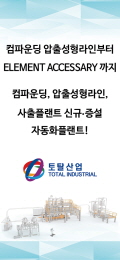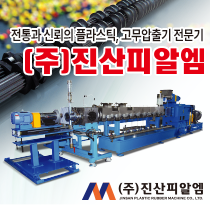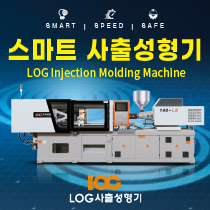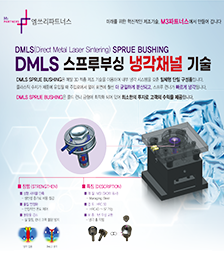Exhibitions/Seminars
EMO Hannover 2017) Are machine tools safe? Depends on it!
- The EMO Hannover 2017 will be hosting an EMO Safety Day
The safety of machine tools is a major issue. Complex machinery, high speeds, and high power levels can be a dangerous mixture for the operator. Neverthe-less, machine tools are very safe products. Many stakeholders have been collaborating for a long time to reach the current safety level: machine tool manufacturers, operators, health and safety experts, EU policy-makers and interna-tional standardisation groups. At the Safety Day for Machine Tools at EMO Hannover 2017, top experts will present their insights on the requirements and challenges entailed by the current state of the art, mapping out how practical solutions ensure high levels of safety and elucidating what remains to be done in the future
▲ Heinrich Mödden, machinery safety expert at the EMO organizer VDW
It is a remarkable story: “For many decades, our companies have proven that they can handle the risks that come with the operation of machine tools”, ex-plains Heinrich Mödden, a machinery safety expert at the EMO organizer VDW (German Machine Tool Builders’ Association). Certainly there is a lot of work still needed, but, as Mr. Mödden continues, “it pays off, as the number of accidents is continuously declining.” This shows that a high level of safety has already been achieved with traditional design practices.
Machine tools: Safety Inside!
A large contribution to this gratifying trend has to be attributed to European Machinery Directive 2006/42/EC (MD), which was issued in 1993 and aimed at levelling the safety standards for machinery across the European Union. "The EU Machinery Directive has been a success story, making working environ-ments significantly safer and reducing hazards”, says Felicia Stoica, policy officer for the Machinery Directive at the European Commission’s Directorate-General for Growth. “The involvement of all stakeholders in the machinery sector, especially manufacturers and their equipment suppliers, has ensured that the actions taken are practicable and beneficial."
The MD takes manufacturers of machine tools into its focus, too, and they have to conduct risk assessments for their design. Since the first version of the MD was established, there have been considerable alterations in the standardiza-tion environment covered by this directive and in particular to risk assessment. As a result, the safety requirements are still being animatedly discussed, e.g. the reliability of mechatronics in safety functions.
Following strict subsidiarity, such rules for safety measures are formulated by expert panels in standardisation processes. For machine tools, this work is being performed on a global ISO level. Hence, many of the international market actors are negotiating about the state of the art. “Machine safety evokes strong involvement of companies or authorities. It can be a tough job to find a consen-sus”, states Christian Neumeister, secretary of the ISO working group for safety of milling machines. “But in the end, we usually find compromises to satisfy the demands of health and safety authorities and keep the effort involved for the industrial sector to an acceptable level.”
Functional safety: the next big thing
Functional safety means that safety has to be proven by quantification of failure probabilities. For machine tools, this is quite difficult, as hazards can be high, even though they occur very rarely. In a scientific study that the VDW organized on behalf of its member bodies, Nika Nowizki from the University of Stuttgart analysed the running times of 578 multi-spindle automatic lathes with a total of 3951 spindles using mostly standard PLC controllers. These produced not a single safety-related accident in over 93,333,000 machine hours of operation evaluated since 1992. “We were happy to see that our gut feeling was scientifically reconfirmed” smiles Eberhard Beck, Head of Machine Control Design at the lathe manufacturer Index in Esslingen, Germany. “It shows that our high safety level is attributable not only to single components, but to our long-term empirical design principles according to product safety standards, which are proven-in-use.”
Still, many safety subjects need further insights. For example, the recent development of turning operations on milling centres is causing uncertainty among manufacturers and their customers as to whether the proven-in-use argument for machine tools remains valid for the future. An intermediate conclusion is that this is only possible when the suppliers of clamping devices are involved.
Another subject is market surveillance. Machine tools are complex products, usually custom-built, and too large and expensive for lab testing. This means it is difficult to determine on-site if the design is compliant with safety regulations. In particular, market surveillance authorities lack qualified personnel and time to investigate. One concept to help market surveillance authorities in doing their job is the CE Guides on Machine Tool Safety published by Cecimo, the Europe-an Machine Tool Association. In simple words, with instructive illustrations, they spotlight the important aspects involved. “If we want to have a level playing field with all market participants, we need to assist market surveillance authorities in doing their job better”, points out Maitane Olabarria of Cecimo. After sawing and EDM machines, the recently finished safety standard for milling machines, ISO 16090, triggered the publication of a new guide to be presented at EMO Hanno-ver.
“The proximity to the EMO exhibition makes it possible to see how the design concepts of modern machine tools have been enhanced once again”, Mr. Möd-den concludes. As a consequence, not only the aspects of machine manufacturers are to be discussed, but also the vital connection to the equipment sup-pliers, as well as the reflections of occupational safety executives arising from their field experience.
▲ At the EMO Safety Day on 19 September in Hanover experts from different professions demonstrate how safe machine tools are.
The expected conclusion of the EMO Safety Day is also an appeal to all world-wide manufacturers to ensure that machine tools which are being designed in accordance to the relevant product safety standards and which are also being operated in accordance with their intended use can be considered safe!
More information: Heinrich Mödden, VDW Research and Technology, phone +49 69 756081-13, h.moedden@vdw.de
At a glance
What: EMO Safety Day for Machine Tools
When: Tuesday, 19September 2017, 10.00 a.m. to 14.00 p.m.
Where: Hannover ExhibitionGrounds, Convention Center
| Programme: | |
| Welcoming Address | Dr. Alexander Broos, Director of Research and Technology, VDW (German Machine Tool Builders Association) |
| Machinery Safety and Market Surveillance in the EU: A Success Story Continues | Felicia Stoica, Policy Officer Machinery Directive, European Commission, Directorate-General for Internal Market, Industry, Entrepreneurship and SMEs |
| Safety of Grinding Machines - Secret of the Success of ISO 16089 and Residual Risk | Christian Adler (BGHM, expert committee woodworking and metalworking of the German social accident insurance scheme), Health and Safety Expert on Grinding Machines; |
| Collaborative impact tests | Dr. Lukas Prasol, Fabio Meister, Scientists, Technical University of Berlin |
| The new Safety Standard ISO 16090 on Milling Machines | Christian Neumeister, Managing Director, German Standardization Commitee for Machine Tools DIN-NWM |
| CE Guide for Milling Machines - A Checklist for the Market Surveillance Authorities | Ms. Maitane Olabarria Uzquiano, Manager Technical Regulations, Cecimo (European Association of the Machine Tool Industries) |
| Safety of Workpiece Clamping Devices | Heinrich Mödden, Technical Expert in Safety, VDW |
| Impact Tests on Guards and Simulation | Dr. Luca Landi, Full-time researcher, University of Perugia |
| Proven-in-Use: Safety of Standard-PLC in Turning Machines | Nika Nowizki, Scientist, Stuttgart University |
Seminar language: English
Attendance fee: 185 Euros plus VAT
Registration: www.emo-hannover.de/conferences
Contact: Ingrid Kirchner,i.kirchner@vdw.de




















